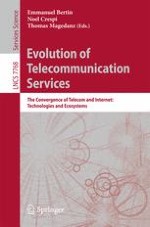In the telecom world, services have usually been conceived with a specific mindset. This mindset has defined the traditional characteristics of these services; services distinguished by their linkage with the access network, tight control over service use (e.g., authentication, billing), lack of deep personalization capabilities (mass services only) and reliance on standardization to achieve end-to-end interoperability between all the actors of the value chain (e.g., operators, platform manufacturers, device manufactures). This book offers insights into this complex but exciting world of telecommunications characterized by constant evolution, and approaches it from technology as well as business perspectives. The book is appropriately structured in three parts: (a) an overview of the state-of-the-art in fixed/mobile NGN and standardization activities; (b) an analysis of the competitive landscape between operators, device manufactures and OTT providers, emphasizing why network operators are challenged on their home turf; and (c) opportunities for business modeling and innovative telecom service offers.
